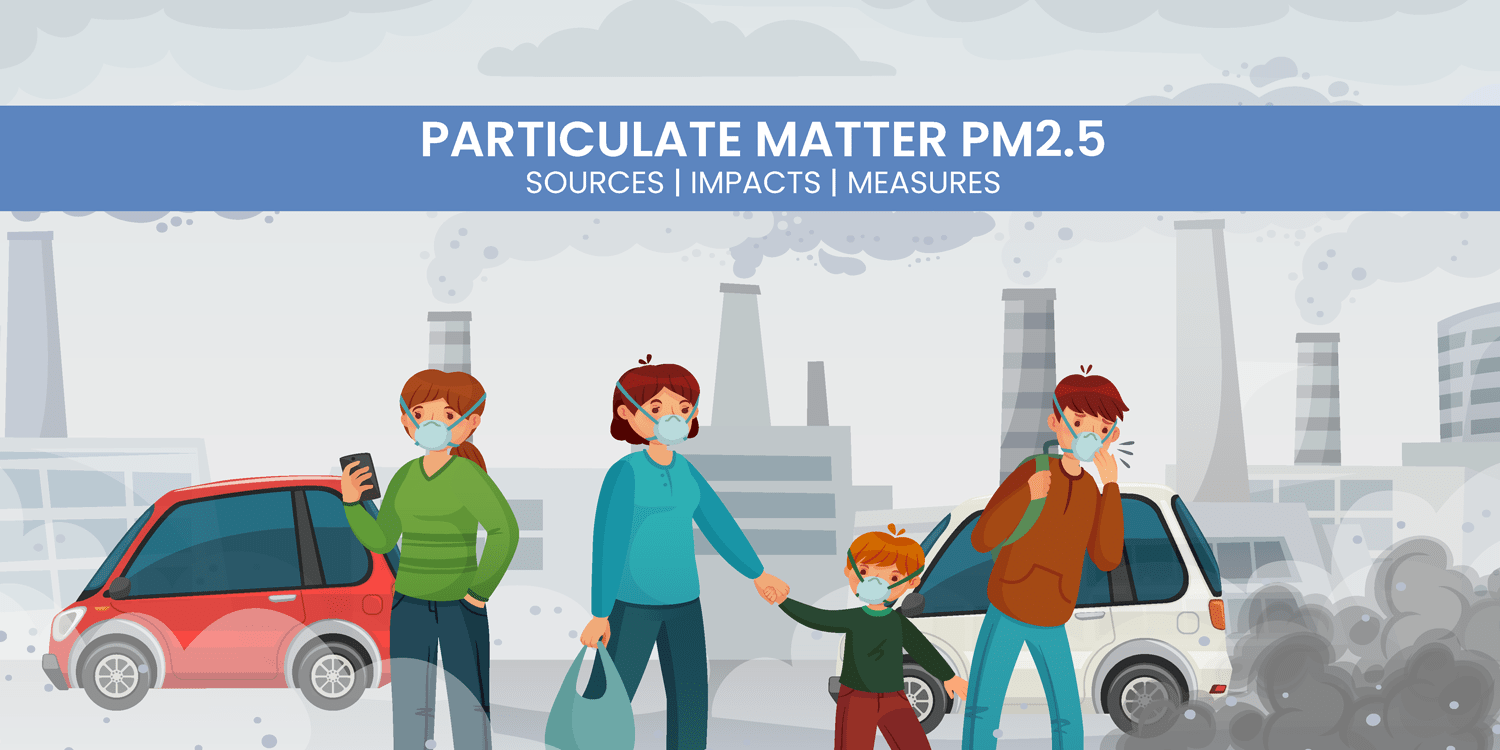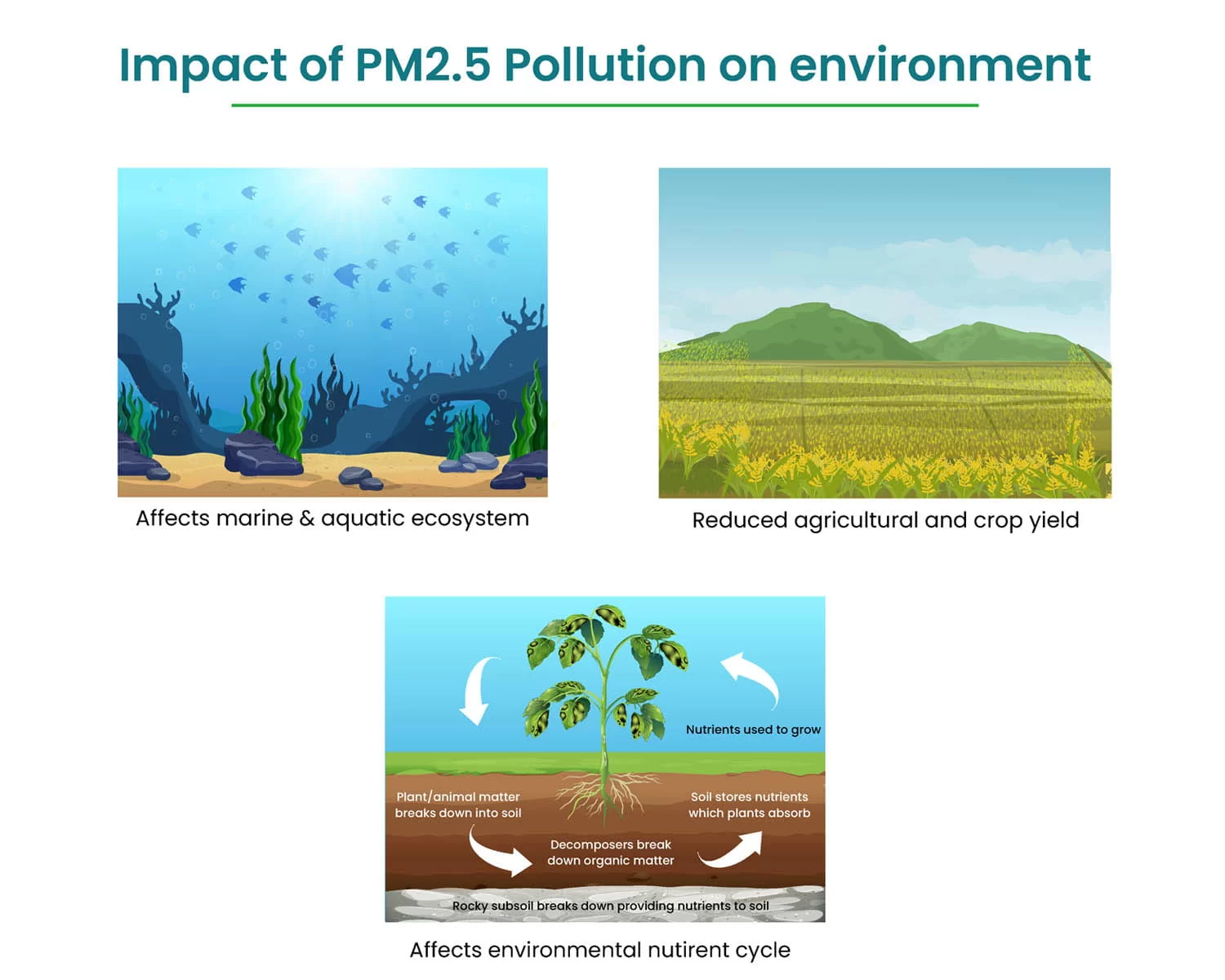What is PM2.5 Particulate Matter?
If we talk about air quality, India has reached an alarming state. Increased PM2.5 impacts air quality, the environment, and human health. The World Health Organization’s recent report showed that 8.0 million deaths per year are seen due to bad air quality. This represents 6.7% of the global disease burden that might be related to particulate matter. Exposure to ozone recorded 1.52 million premature deaths.
Factors for Increased PM2.5 Concentration
The combination of suspended solid particles and liquid droplets in the air forms particulate matter. It also contains dust and soot. PM2.5 is an ultra-fine inhalable particle having a diameter of 2.5 micrometers, and it can penetrate deep into the lungs, causing respiratory diseases and ailments. It also comprises metals and heavy metal ions (Cadmium, Nickel, Potassium, Copper), organic and inorganic compounds, allergens, many microbial compounds, and Polycyclic Aromatic Hydrocarbons (PAHs).
Increased air temperature during the winter season and atmospheric inversions in the Northern hemisphere increase PM2.5 concentration in the air. During the summer season, stationary air mass, forest fires, and secondary aerosol formation increase PM2.5 concentration.
In northern India, several factors contribute to increasing particulate matter concentration. Physical, chemical, and meteorological factors affect the concentration of pm in the environment. Physical and chemical factors, inclusive of particle size, number, density, and concentration in the atmosphere, affect the mobility (movement) of particles. Other than this, meteorological factors like wind speed, wind direction, and weather conditions such as rainfall affect the processes of transport and the fate of PM in the environment.
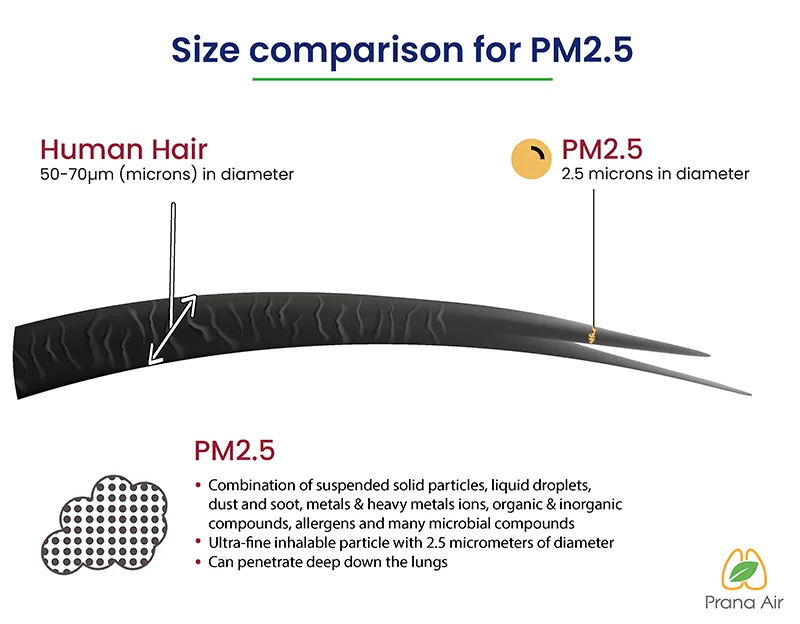
In summers, residential energy contributes 62% to PM2.5 concentration and 70% to winters. Research experiments have shown that concentration rises at night. India has reported 60 ug/m3 and 40 ug/m3 as 24-hour and annual PM2.5 concentrations, respectively.
SOURCES OF PARTICULATE MATTER PM2.5 IN THE ENVIRONMENT
The presence and emergence of PM2.5 in the environment are still debatable. Sources are the origin from where this pollutant enters the environment.
1. Natural Sources
Several natural events, such as rain and runoff, affect the mobility of PM 2.5. Rainwater washes away the pollutant and changes its fate in the environment. Forest fires, volcanic eruptions, and natural calamities such as earthquakes lead to an increase in Particulate Matter concentration. It has a reduced rate of atmospheric descent, which increases its persistent time in the environment.
2. Industries and treatment plants
Processes of product production in the Paper pulp industry, oil refineries, brick kilns, power plants, and municipal waste treatment plants release PM 2.5 into the environment.
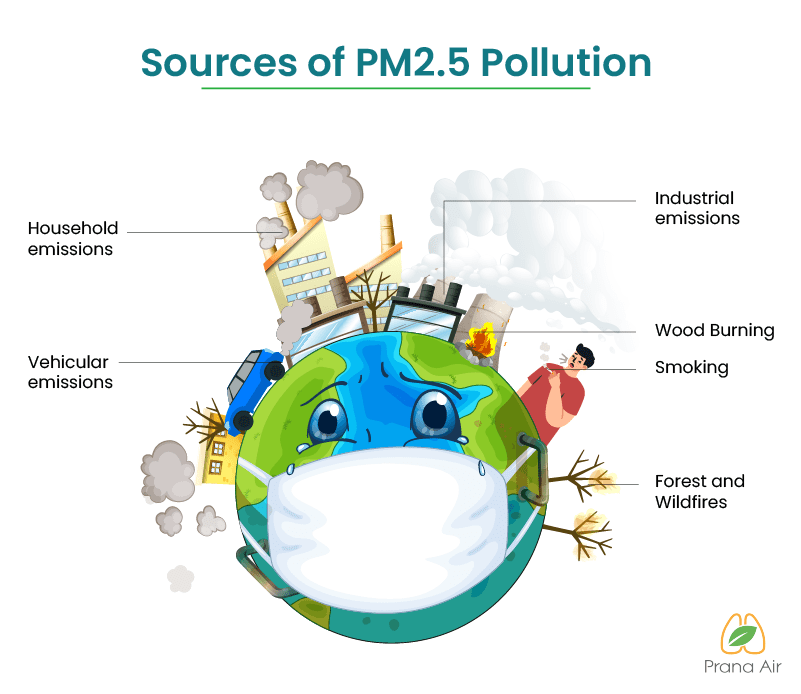
3. Emissions
Emissions from vehicles, coal combustion, burning of leaves and woods, agricultural activities, stubble burning, biomass burning, and biofuel burning lead to increased particulate concentration. Gaseous emissions from power plants react in the atmosphere and form particulate matter.
4. Household activities and personal habits
PM 2.5 is also released from tobacco smoking, candle burning, cooking activities like sautéing, frying, irregular maintenance of kitchen chimneys, kerosene heaters, gas stoves, fireplace operation, etc. Other than this, construction activities increase the concentration of PM2.5.
IMPACTS OF PARTICULATE MATTER (PM2.5)
A. Impacts of PM2.5 on the environment
Particulate matter not only impacts human health but also the environment. The environmental impact of PM2.5 is seen as visibility reduction, acid rain, increased air pollution, material damage, ecosystem damage, reduced functioning of plants & trees, contaminated streams & oceans, and decreased crop productivity and yield. Its dispersal is easy due to size and causes it to change its environmental fate.
1. Haze production
The haze reduces the visibility and increases the chances of road accidents. Particulate Matter leaves a stain affecting the materialistic environment such as buildings, statues, monuments, etc.
2. Soil fertility
Different chemical composition of particulate matter shows different effects. It also affects soil fertility leading to a reduction in crop yield and agricultural productivity.
3. Nutrient cycle
Particulate Matter interferes with nutrient cycling affecting the rhizosphere.
4. Plant Photosynthesis
Fine particles, when settled over leaves, block the penetration of sunlight into leaves and disrupt the process of plant photosynthesis. The generation of abrasions and radiative heat affects the photosynthesis of plants due to the layering of PM2.5 over leaves. This reduces photon flux reach towards photosynthetic tissues.
5. Deposition in water bodies
The settling of toxic PM2.5-containing heavy metals into water bodies, including streams and oceans, affects the marine and aquatic ecosystems. Several aquatic life forms die due to their reduced acidic tolerance. This also impacts humans when they include contaminated aquatic food in their diet.
6. Disturbing ecosystems
Particulate matter also disrupts the food chain and food web in the ecosystem because of their shared dependencies, different toxicity tolerances, and associated effects. Its concentration affecting the ecosystem has direct links to climate change.
B. Impacts of PM2.5 on human health
In epidemiological studies, severe health effects are linked with particulate matter having a diameter of 2.5 microns. The effects of particulate matter in the human body depend on its exposure duration and concentration.
The health effects of PM2.5 differ by age group, gender, and race. Studies and research show white people, children, and women are highly susceptible to being affected when exposed to it.
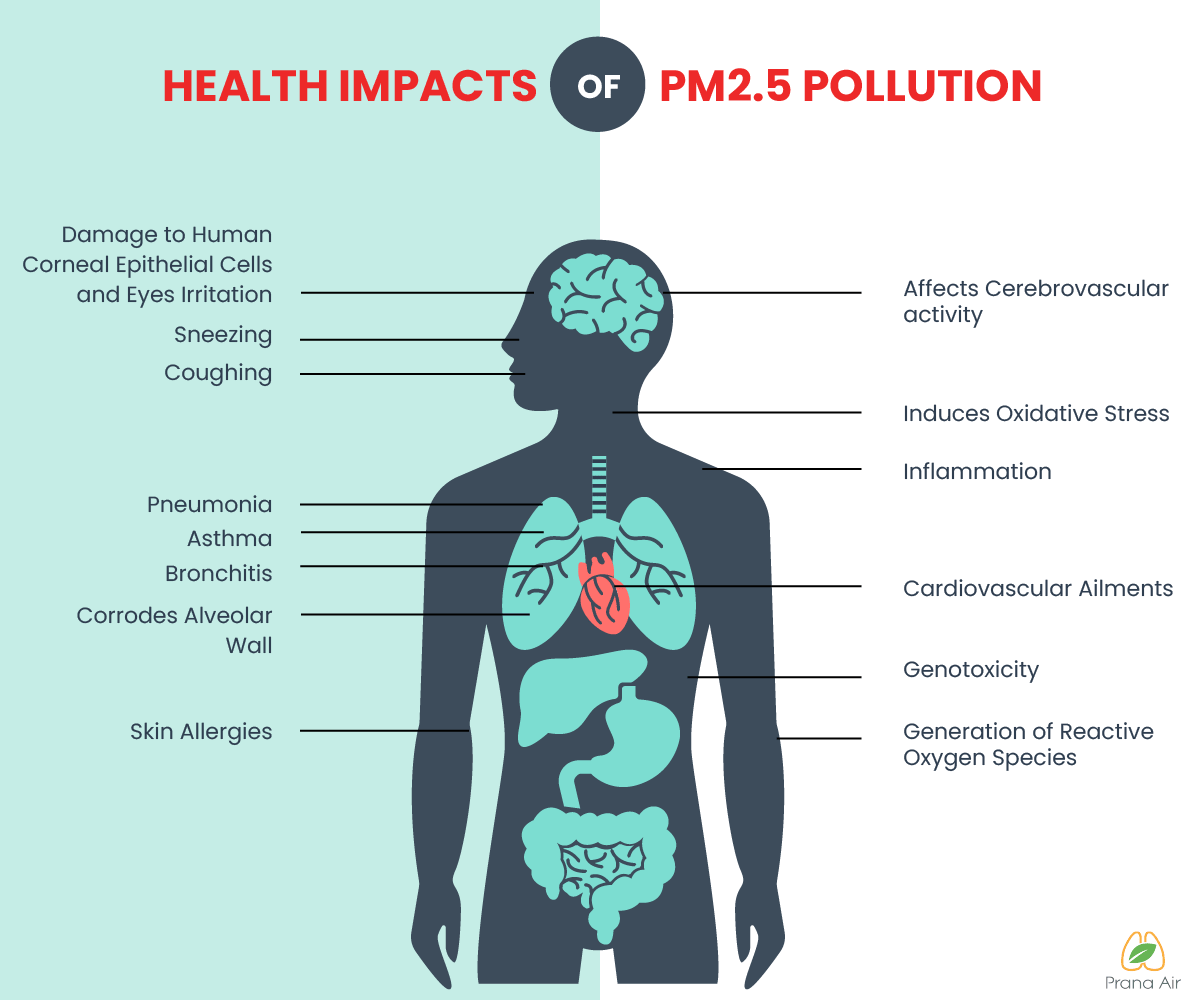
1. Penetration to the respiratory system
Particulate matters have a tendency to carry toxic materials with themselves due to their reduced diameter and increased surface area. The small-sized PM easily escapes from nostrils and penetrates deep down towards the bronchi and alveoli, corroding the alveolar wall in the lungs.
According to WHO, in 2016, 4.2 million premature deaths were recorded because of PM2.5 exposure.
2. Increased Hospitalizations & absenteeism
Exposure to PM2.5 increases hospitalizations, visits to the emergency room, and absenteeism from schools and offices, especially in cases with pre-existing disorders, old people, and children. Particulate matter causes pneumonia and bronchitis.
3. Malignant effects
Exposure to Particulate Matter 2.5 shows malign effects in early life, including respiratory, cardiovascular, and prenatal disorders. This elevates infant mortality chances.
4. Human cornea and conjunctiva
Exposure to the high concentration of PM2.5 leads to burning, itching, and redness of the eyes, allergic conjunctivitis. Laboratory studies show it reduces the survival of Human Corneal Epithelial Cells (HCEC) by triggering cell autophagy. It is also responsible for cell shrinkage.
5. Reduced antioxidants
Particulate Matter reduces antioxidants in the human body. Hydroxyl ion-induced oxidative stress damages the DNA. Teratogenesis, mutagenesis, and carcinogenesis are induced by damaged DNA when it is not repaired in time.
6. Increased ROS species
Over-production of reactive oxygen species (ROS) decreases the antioxidant functioning of cells, leading to lipid peroxidation on the cell membrane and elevating intracellular calcium (Ca2+) levels. Free radicals from PM2.5 induced free radical production to oxidize lung cells and could be a prime cause of bodily injury caused by free radical peroxidation.
7. Reduced metabolic activities
PM2.5 triggers overexpression of inflammation-related cytokines, autophagy, and transcription factor genes, causing inflammatory injuries in cells. Particulate matter increases pathogenic adhesion and decreases antimicrobial activity, indigenous microflora, alveolar macrophages, and natural killer cells.
8. Other related health effects
PM 2.5 causes cerebrovascular disorder, mental health, sneezing, coughing, irritation in the eyes, nose, and throat, skin allergies, asthma, Cardiovascular Obstructive Pulmonary Disorder (COPD), suffocation, cardiac arrhythmia, cancer, genotoxicity, cancer, and inflammation. Studies show it can even cause diabetes mellitus, reduced birth weights, and premature deaths. It causes cardiovascular and pulmonary diseases leading to mortality and morbidity increment.
22 Indian cities out of the 30 most polluted cities in the world are
Construction activities, automobile numbers (which increase with an increase in population), industrialization, and urbanization in Asian metropolitan areas contribute largely to PM2.5 pollution.
According to WHO, 91% of people live in places with an air quality index higher than the prescribed standards. 91% of premature deaths are seen in low and middle-income countries.
According to a paper published in Lancet Planetary Health by the India State-Level Disease Burden Initiative, 18% of total deaths in India were due to air pollution in 2019.
The American Cancer Society’s cohort study showed a 15-27% increase in the mortality of lung cancer with a 10ug/m3 increase in PM2.5 concentration.
According to a recent 2021 report released by the Swiss Organization, 22 Indian cities hold the rank among the 30 most polluted cities in the world.
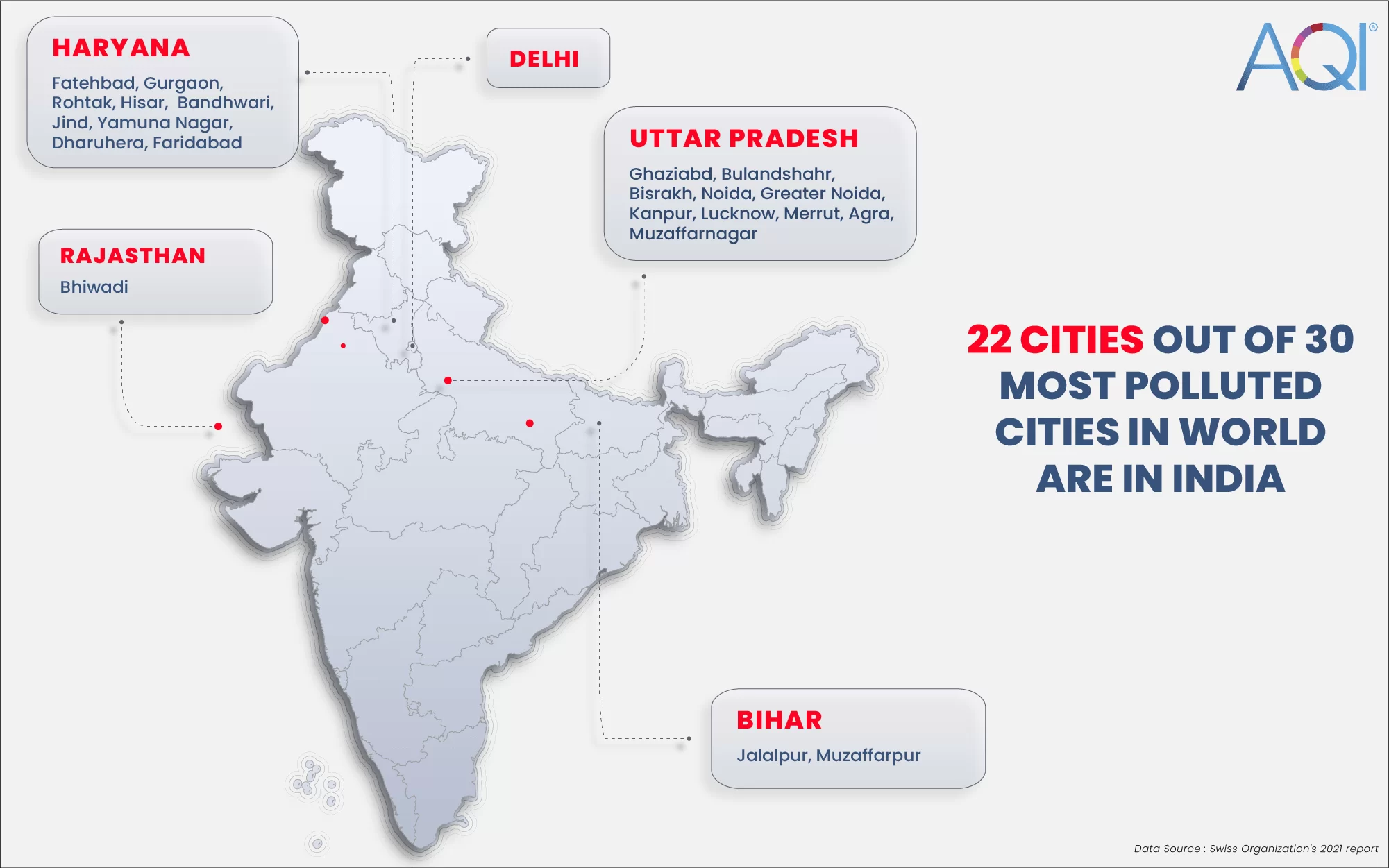
Ghaziabad ranked second with 106.6 ug/m3 of average annual Particulate Matter 2.5 concentration after Hotan, China. Other Indian cities securing rankings were Bulandshahr, Bisrakh, Jalalpur, Bhiwadi, Noida, Greater Noida, Kanpur, Lucknow, Delhi, Faridabad, Meerut, Hisar, Jind, Haryana, Agra, Fatehabad, Muzaffarnagar, Muzaffarpur, Gurgaon, Bandhwari, Yamuna Nagar, Rohtak, and Dharuhera. Most of these cities are in the North Indian states of Uttar Pradesh, Haryana, and Rajasthan.
STUBBLE BURNING’S ADDITION TO PARTICULATE MATTER CONCENTRATION IN DELHI
The northern region of India falls on the Indo-Gangetic Plain. Pre-monsoon (April to May) and post-monsoon (October to November) period is when residents of North India experience heavy air pollution. In 2020, Nair M. et al reported India as the second-highest aerosol emissions contributor solely because of stubble burning. Stubble burning and its association with transportation emissions have direct and indirect impacts on both human health and climate change. In the year 2019, the value of the Air Quality Index (AQI) in Delhi was recorded at 487. Ghaziabad recorded 493, whereas in Greater Noida it was 480, which has a deadly and hazardous impact on human health.
Stubble burning is the burning of straw stubble from rice and wheat harvest and is hazardous for Delhi and its residents. Stubble burning causes increased particulate matter concentration in atmospheric air which can penetrate deep inside the lungs raising lung cancer chances by 36%.
India shares 26.2 % of total global Disability Adjusted Life Years (DALY). Punjab, Haryana, Uttar Pradesh, and Rajasthan from Northern India reported the highest DALY. A report from the World Bank showed that biomass burning contributes to 9-28% of PM2.5 in Delhi, 23-29% in Mumbai, 24% in Chandigarh, and 37-70 % in Kolkata. Particles released from stubble burning are stagnant at 2 km height higher than the stubble region and these particles are dispersed by wind to higher heights at 3000m towards the side of Delhi. The stagnation of these particles could be due to reduced wind speed and direction.
Emissions from burned stubble:
With stubble burning, carbon monoxide (CO), carbon dioxide (CO2), nitrogen oxides (NOx), sulfur oxides (SOx), methane (CH4), and PM10 and PM2.5 are released. Every year in India, 342 MT of stubble is generated, out of which 34% and 22% are produced by rice and wheat, respectively. 23.86% of 342 MT is burned immediately after harvest on fields in an open environment.
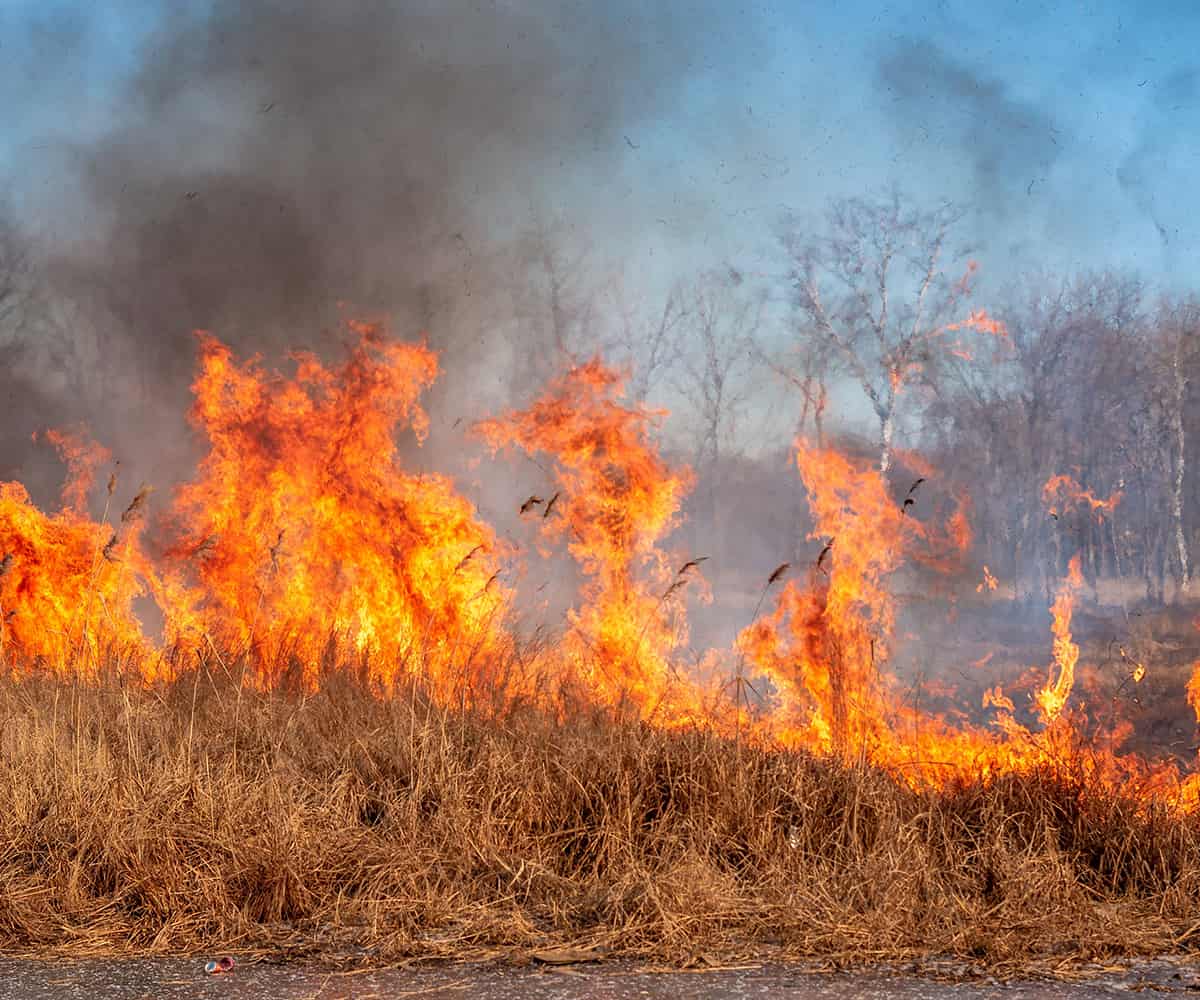
IARI (Indian Agricultural Research Institute) report showed that each year 14 MT out of 22 MT of rice stubble is burned. Haryana and Punjab are responsible for 48% of total rice stubble burning. In 2011, Sahai et al reported that the burning of 63 MT of stubble is responsible for 3.4 MT of CO, 0.1 MT of NOx, 91 MT of CO2, 0.6 MT of CH4, and 1.2 MT of particulate matter released into the air.
46.5% of the increase in stubble burning was reported by the Economic Times from Punjab and a reduction of 28.6% from Haryana. In 2019, Punjab reported 52,225 active fires from stubble burning which increased by 24.312 fires in 2020 making it 76.537 active fires. This leads to an increase in particulate matter concentration.
MEASURES TO REDUCE PARTICULATE MATTER 2.5
Each and every contribution counts when it comes to reducing pollution. There are some measures that individuals can adopt to reduce PM2.5 pollution.
- If you do smoke, quit smoking because it hikes particulate matter by 2.5 concentrations.
- Avoid the continuous burning of wood, candles, and fireplaces.
- Do not use vacuum cleaners without HEPA filters.
- Avoid using personal transport every time, and planning many trips
- Switch to renewable and clean sources of energy in domestics namely solar and wind energy.
- Give use of generators in houses a miss.
- Switching off the vehicles when waiting at red lights.
- Stop getting unnecessary renovations and constructions at houses.
A major step towards reducing particulate matter is to stop stubble burning. Instead, stubble, when managed duly, can bring in various economic benefits. Stubble produced after crop harvest has the ability to increase soil fertility. Hence, its application will make the soil more fertile. Stubble is a good source of energy and can be applied in power plants. The stubble-based raw material is beneficial in the paper and pulp industry. In biofuel, production stubble is used as biomass. Stubble is easy to convert into compost or biochar.
A study was given by Upadhyay A., et al in 2018 showed that emissions from the transport, industrial, and energy sectors when mitigated completely save 92,380 premature lives. Emissions from residential sectors when mitigated completely can save 378,295 lives. This accounts for 95% of uncertainty intervals.

